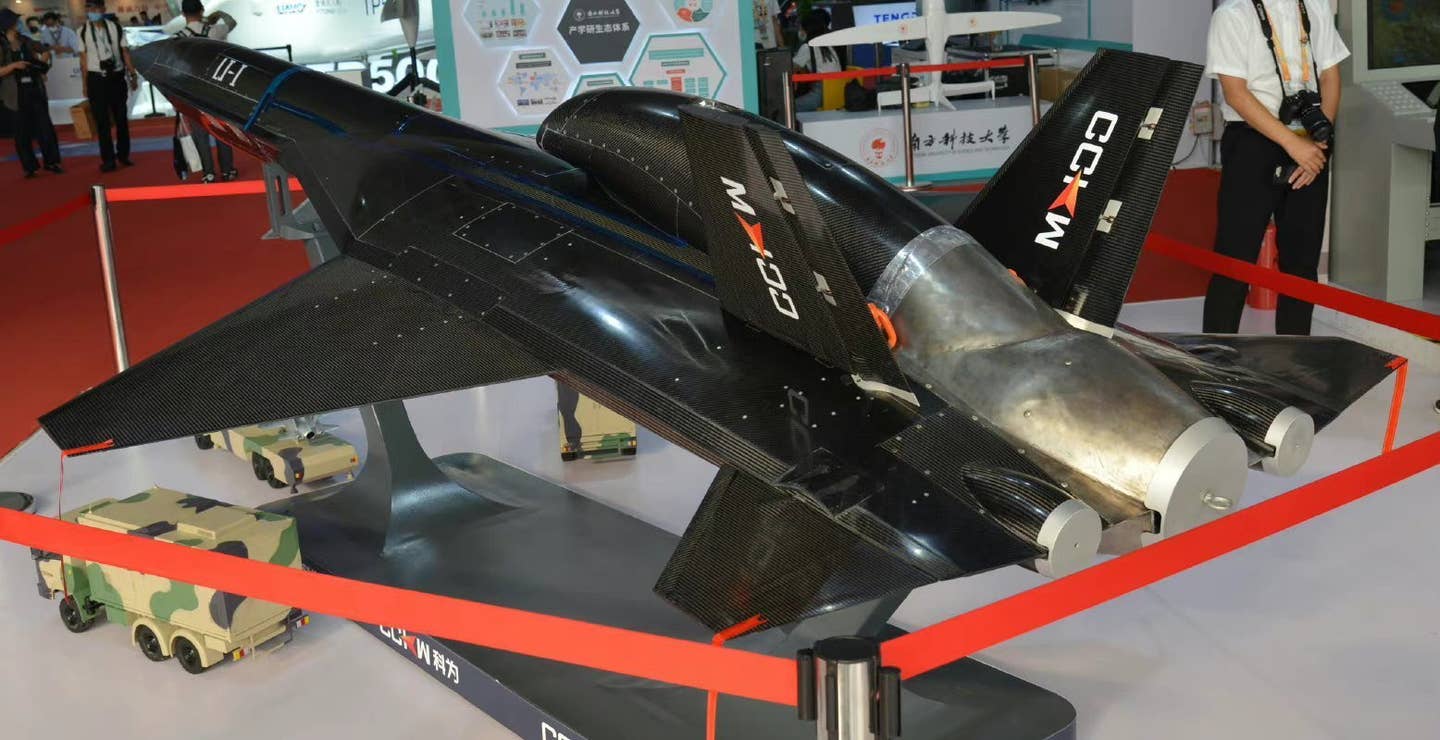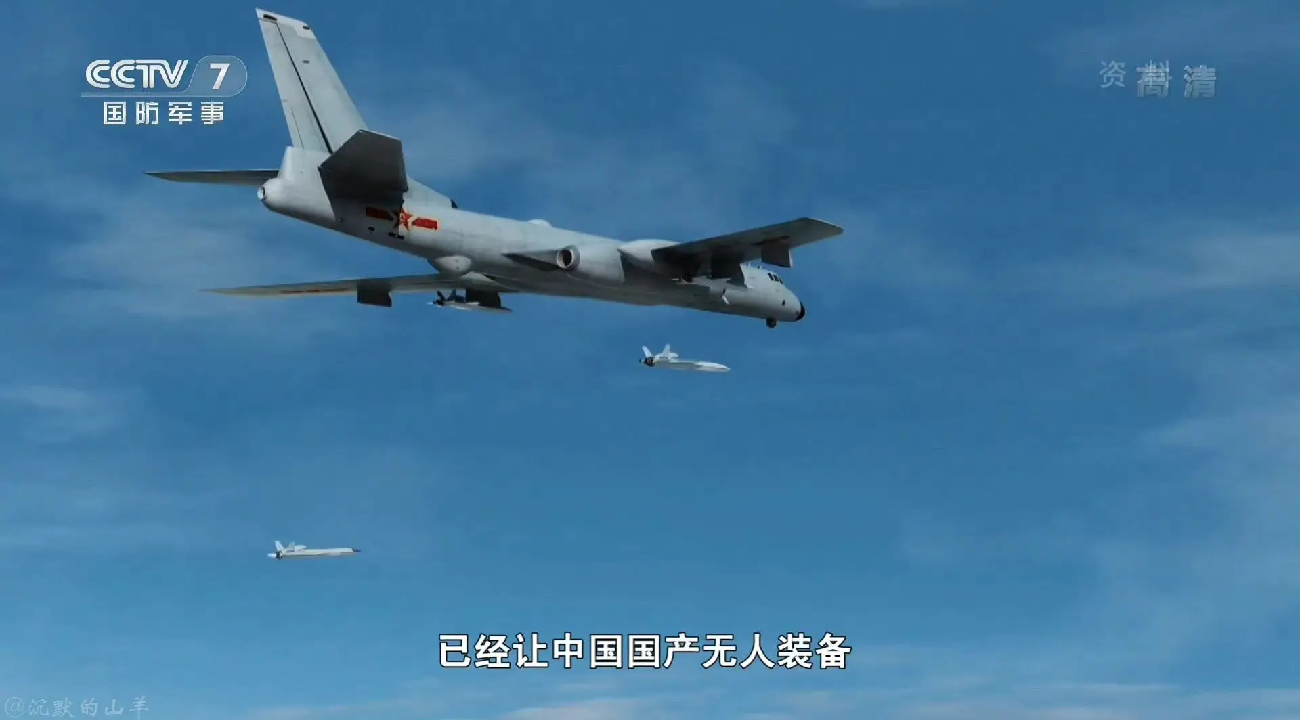A video broadcast by China’s official state media recently showed the H-6K heavy missile carrier’s future crewed-uncrewed teaming and swarming capabilities.
An H-6K bomber is seen launching four LJ-1 drones, which are then connected in a diamond pattern. The computer-generated animation also illustrates the capabilities that the PLA plans to acquire for its bombers.
The exact date when the CCTV-7 program was first aired is unknown. But on October 12, a user going by the handle @louischeung_hk posted the footage of the drones for the first time on Twitter.
The LJ-1 was planned to be used as an aerial target or for other training missions. Although the latest video implies it might be used as a tactical unmanned air vehicle that is less expensive and could support manned military aircraft.
H-6K drops multiple drones pic.twitter.com/EaQ9Hh2Cx8
— 彩云香江 (@louischeung_hk) October 12, 2022
A Twitter user commented on the post and said: Unlike Russia, China understands how modern wars should be fought.
The H-6K bomber aircraft is manufactured by China’s Xian Aircraft Corporation (XAC). It is a modified, long-range version of the Soviet Tu-16 Badger medium bomber from the 1950s. It is also regarded as the only mass-produced bomber in existence.
The LJ-1 drone first appeared at the MAKS 2019 Air Show, Russia’s biggest air show. At the time, China’s state-owned media, Global Times, claimed that the drone could sometimes replicate third, fourth, or even fifth-generation fighter jets.
The Xi’an-based Northwestern Polytechnical University designed and developed the drone in collaboration with CCKW, a small aviation company. It is defined as a “tactical target featuring sustained-G, long endurance, stealth, and recoverability.”

The drone has an estimated length of about 15 and a half feet and a wingspan of slightly over eight feet. According to Aviation Week, the LJ-1 can perform “tactical, operational tasks.”
In addition, the Chinese developers previously claimed that the LJ-1 might serve as a standoff ground assault missile or a radar jammer.
“It could also perform a mission of interfering with infrared seekers, although it was not clear what this meant,” Aviation Week added. The drone might even be employed for something as straightforward as carrying decoy flares. Target drones can usually fire flares and disperse radar-confusing chaff.
The LJ-1 can be outfitted with systems that augment its radar and infrared signatures. Nevertheless, it is widely known that Beijing intends to integrate its stealth J-20 fighter plane with unmanned drones.
The same CCTV-7 program featured the H-6K-launched LJ-1s and also displayed images of one two-seat J-20 stealth fighter and three GJ-11 Sharp Sword stealth flying wing unmanned aerial vehicles.
The H-6K, a large missile carrier aircraft, might be able to send LJ-1 drones off closer to the operation zone. This would enable the drones to either advance farther into enemy territory or stay in place for longer to conduct various duties.
Additionally, the drone might be able to take off from various ships or tiny islands, which would, in some instances, allow it to begin its mission closer to its target location. It is unknown when and how the PLA will eventually deploy the LJ-1 and the related crewed-uncrewed teaming capabilities.

India Can Do It Too
China’s key adversary, India, could also equip its military aircraft with suicide drones. These drones would also be tasked with conducting aerial reconnaissance, executing kamikaze attacks on adversary targets, and destroying them.
Vijainder K Thakur, a columnist with the EurAsian Times, mentioned this possibility in his previous article. He argued that such drones are currently being developed in Russia and might eventually give New Delhi a chance to convert its IL-76 aircraft into drone motherships.
As part of this program, the Russian military transport aircraft Il-76MD-90 will be outfitted with up to eight Molniya modular drones. The Kronshtadt Company, which specializes in producing top-of-the-line military drones, is developing Molniya.
The report claims that the Il-76MD-90 can carry up to eight Molniya drones and that a fighter aircraft like the Su-30MKI can carry three. Molniya drones are modular in design, allowing them to be customized for an attack, reconnaissance, target designation, EW, or any other unique mission.
These drones will be capable of exchanging crucial data with each other. Also, drones are interchangeable and can switch between leadership roles. Furthermore, a group of drones can carry out their mission without constantly communicating with the carrier aircraft, thanks to artificial intelligence.
- Contact the author at ashishmichel@gmail.com
- Follow EurAsian Times on Google News




